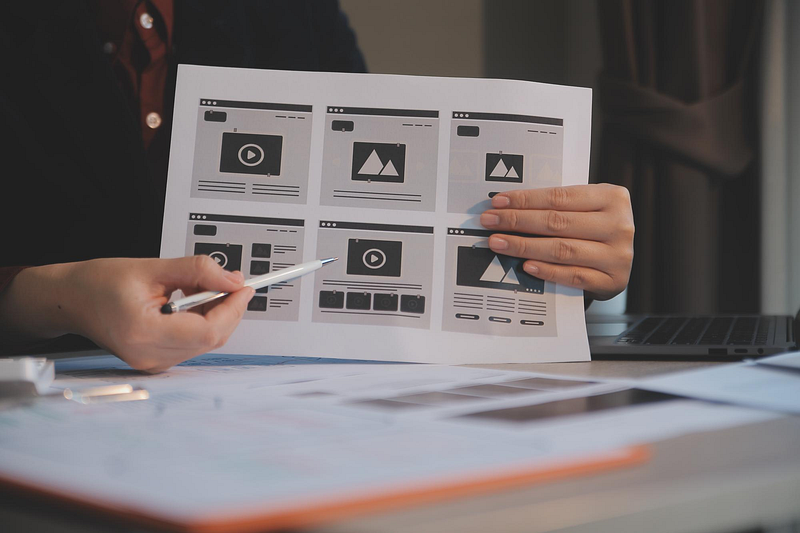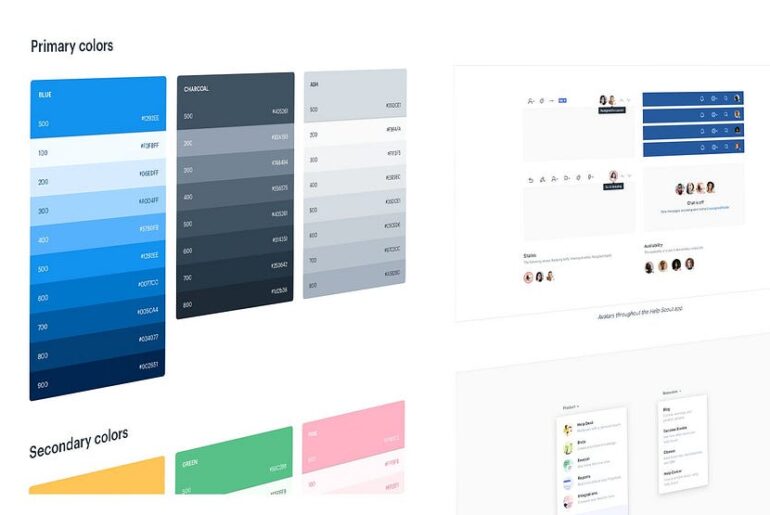Stop seeing developers as roadblocks and start seeing them as allies. Trust me, your work (and your sanity) will thank you for it.
Welcome to the real world, kid
When I was a freelancer, I thought I had it all figured out. Clients loved my designs, my invoices were being paid (most of the time), and I was churning out websites that made people go, “Wow, you’re so talented!”
I was on top of the world, armed with Photoshop and limitless imagination. Developers? Who needed them? I was the master of my craft, and no one could tell me otherwise.
But then reality hit.
Working with developers for the first time was like stepping into a new dimension — one where my carefully crafted designs weren’t the gospel truth, and where “too hard to code” became a phrase that haunted my dreams. What I learned through frustration, compromise, and a lot of caffeine-fueled late nights reshaped not just how I approached design, but how I saw myself as a professional.

I was the King of my world
Freelancing in my early career felt like being a one-person army. I wasn’t just designing websites; I was running the entire show — from client pitches to final handoffs. My clients’ feedback was my only compass, and as long as they were happy, I figured I was doing everything right.
My designs were praised. My clients called me “amazing.” So why would I question whether my handoffs to developers were flawless?
If a client wasn’t complaining, there was no problem… right?
Well, no. The issue wasn’t visible to me because I wasn’t looking for it. I didn’t have a developer sitting there saying, “Hey, maybe don’t create a header that changes colors every two seconds — it’s a nightmare to code.” To me, if it looked good and the client liked it, the job was done. I didn’t know what I didn’t know.
The misconception that Devs were just crybabies
During my freelancing days, I tried learning front-end development to expand my business.
Spoiler alert: I hated it.
But in the process, I learned something that shaped how I saw developers for a long time. Back then, technology was restrictive. We were slicing .png images in Photoshop and manually aligning everything with CSS. It felt like creativity had to take a backseat to technical limitations.
That’s when I developed the mindset that developers were these overly technical buzzkills.
“Just code it! Why are you making this so complicated?”
In my mind, they were crying over things I considered minor. I didn’t realize it wasn’t about them being difficult — it was about the limits of the tools they were working with.
But that realization would come much later.
Freelance meets Development Hell
One of my earliest projects involved a client on 99designs. We spent two months refining five pages of designs — just me and the client, dreaming up perfection. Then came the big moment: a Skype call with the developer they’d hired.
Within minutes, the developer declared that 70% of my designs were “too hard to code.”
Cue panic. The client wasn’t thrilled, and suddenly, my “perfect” designs were on the chopping block. We spent another month reworking layouts, slicing layers, and simplifying sections.
I learned the hard way that design isn’t just about what looks good — it’s about what works in the real world. A proper design handoff isn’t just dropping some pretty files into a shared folder and hoping for the best. It involves clear steps that bridge the gap between design and development, ensuring the transition is smooth and efficient.
Here’s what a proper design handoff typically looks like:
- Documenting Design Decisions: Every design choice — colors, typography, spacing — should be documented. Developers shouldn’t have to guess why a button is green or why there’s extra padding around a specific section.
- Providing Developer-Friendly Files: Whether it’s Photoshop (for old-school cases!), Figma, Adobe XD, or Sketch, make sure your files are clean and organized. Use proper layer names, group elements logically, and avoid leaving behind random unused assets.
- Including Responsive Guidelines: Specify how the design should behave across different screen sizes. Developers need to know what the mobile, tablet, and desktop versions should look like to avoid unnecessary back-and-forth.
- Regular Check-Ins: Handoffs aren’t a one-and-done deal. Schedule meetings to walk through the design, answer questions, and resolve ambiguities. Open communication ensures that nothing gets lost in translation.
By incorporating these steps into your process, you’ll save time, reduce frustration, and ultimately create a stronger end product that works in the real world.
It’s a win-win for designers, developers, and clients alike.

When creativity meets Constraints
If there’s one thing that still frustrates me about working with developers, it’s their linear way of thinking. Creativity doesn’t always fit neatly into grids and rules, but developers often operate within those boundaries.
I’ve had countless projects where the dev team pushed back, not because they didn’t want to make my designs a reality, but because the technology (and sometimes the budget) simply wouldn’t allow it.
One particularly tough lesson came during my first agency job.
I quickly learned that budgets dictated creativity. If a design required extra hours of development, the project’s profitability would take a hit. Suddenly, my job wasn’t just about making something beautiful — it was about making it practical. It was a bitter pill to swallow, but it made me a better designer in the long run.
It’s a collaboration, not a competition
Over time, I realized that developers weren’t my adversaries — they were my allies. As a product manager now, I bridge the gap between design and development every day, and I’ve learned that good communication is everything.
Developers bring a level of analytical thinking and problem-solving that can elevate your designs in ways you never imagined.
One of the biggest mindset shifts for me was understanding that developers are users too. They might not have direct access to the client or the target audience, but they use apps, websites, and interfaces daily. Their feedback often comes from a place of practicality and insight.
Listening to them has not only improved my designs but also strengthened my relationships with them.
Involve them early, win late
If there’s one piece of advice I’d give to any designer, it’s this:
Involve developers early in the project.
Don’t wait until the handoff stage to hear their input. By bringing them into the conversation during the planning phase, you can avoid so many headaches down the line.
Developers can point out potential technical challenges or suggest better ways to achieve your vision. Early involvement isn’t just a courtesy; it’s a game-changer for the success of a project.
When developers are looped in during the planning phase, they can flag issues before they become roadblocks, saving everyone time, money, and a whole lot of frustration. They might even surprise you with solutions you hadn’t considered — a tweak here, a simplification there, and suddenly your ambitious design is not just possible, but practical.
Handling feedback during this process is equally critical. At first, it might feel like they’re dismantling your vision piece by piece, but their input is usually coming from a place of practicality and experience.
Instead of resisting, ask questions:
Why do you think this approach won’t work? How would you suggest we solve this issue?
By opening up the conversation, you foster collaboration and ensure the project is a joint effort.
If you’re new to navigating feedback — whether it’s from developers or anyone else — check out this guide I’ve written on how to handle feedback like a pro: I Thought I Knew It All After 8 Years Freelancing — Then I Joined a Team.
Trust me, it’ll save you a lot of headaches down the road.

Becoming a Better Designer
Learning to work with developers has made me a more thoughtful designer. It’s not just about what looks good on a screen — it’s about creating solutions that are functional, scalable, and user-friendly.
Collaboration with developers has taught me to think beyond aesthetics and consider the bigger picture: timelines, budgets, and user needs.But perhaps the most important lesson is this:
Respect goes both ways
When you listen to developers, involve them early, and appreciate their expertise, you create a partnership that benefits everyone — especially the end user.
So, to all the designers out there: stop seeing developers as roadblocks and start seeing them as allies.
Trust me, your work (and your sanity) will thank you for it.





1 Comment
Pingback: You’re Not a Bad Designer — But You Might Be a Terrible Teammate - PM with Leo